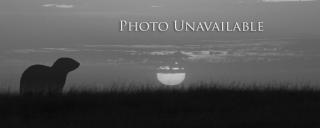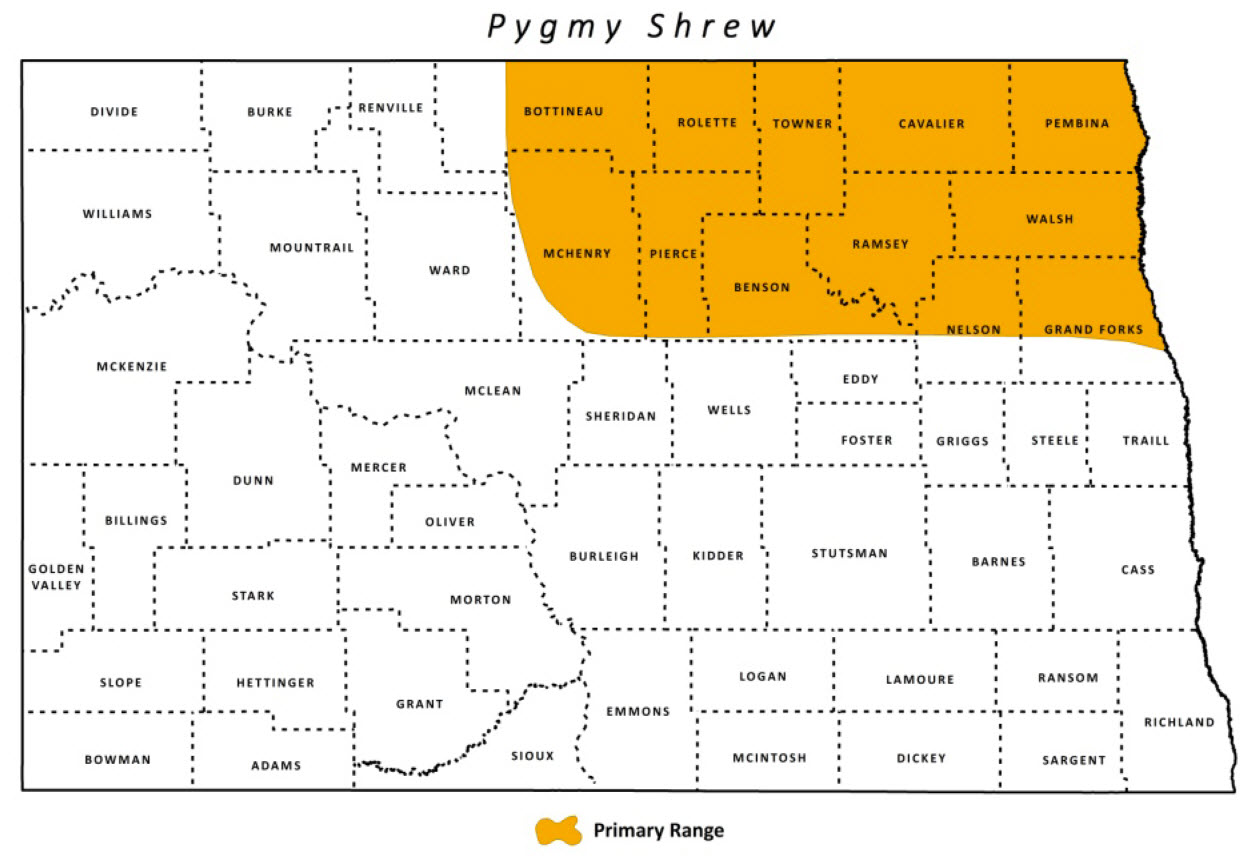
Pygmy Shrew
| Scientific Name | Sorex hoyi |
|---|---|
| General Description | North Dakota’s smallest mammal. Four inches in length, of which one third is tail. It has a reddish brown to gray coat with an underside somewhat lighter. The tail is dark brown on top and lighter underneath. Pygmy Shrews have small black eyes and stiff hairs called vibrissae along their nose. |
| Status | Year-round resident. |
| Abundance | Rare. |
| Primary Habitat | Found in eastern North Dakota in areas with exposed sand dunes or sandy soils covered with grass. Can also be found feeding in crop fields. |
| Federal Status | No federal status. |
| Reason for Designation | Little is known about this tiny mammal within the state. Its population is considered vulnerable in this part of the country. |
Locations and Conditions of Key Habitat
Preferred Habitat
Range-wide, Pygmy Shrew occupy numerous habitat types, including mesic mountainous areas, dry sandy ridges, forests and woodlands, grazed pastures, sagebrush grasslands, lowland marshes, and edges of sphagnum bogs. In this region they seem to favor wetlands and riparian woodlands associated with mixed and tall grass prairies.
Key Areas and Conditions for Pygmy Shrew in North Dakota
In North Dakota this Pygmy Shrew appears to be associated with grassland/wetland complexes. Wetland complexes of Ransom and Benson counties have known populations. Forested areas in the Turtle Mountains and Pembina Gorge may also hold populations.
Problems Which May Affect this Species
Habitat
The conversion of native grasslands wetlands, and riparian areas is a major threat facing this species.
Other Natural or Manmade Factors
Use of pesticides may threaten this species’ food base.
Research and Survey Efforts
Current Research or Surveys
- Currently there is no research or survey effort in progress.
Previous Research or Surveys
- A survey and relationship study of wetlands in the Pygmy Shrew range was conducted by the USFWS (1989).
- Small mammal surveys have been conducted on Upper Souris NWR, Des Lacs NWR, and J. Clark Salyer NWR, all within the possible range of the Pygmy Shrew.
Additional Research or Surveys Needed
Develop a monitoring protocol for small mammals in North Dakota.
Management Recommendations
- Work with partners to minimize impacts to grassland habitats.
- Implement restoration projects where possible.
- Implement grazing systems to benefit grassland/wetland species.
- Work with partners to ensure Swampbuster provisions are maintained.
- Control noxious weeds through biological and chemical methods.
- Work with state and federal agencies to enforce existing pesticide regulations.
- Coordinate with wind energy companies to minimize impacts to grassland habitats.
- Survey areas of data gaps. Conduct research/surveys to establish baseline information on Pygmy Shrew
Monitoring Plans
No monitoring plan for this species has been developed.
2005-2015 Progress
The Plains Pocket Mouse maintains a Level I on the Species of Conservation Priority list. A better understanding of this species historic distribution has been developed, but information on life history is still lacking.

Note: A listing of works consulted when compiling the information on this page may be found in the 2015 State Wildlife Action Plan.
